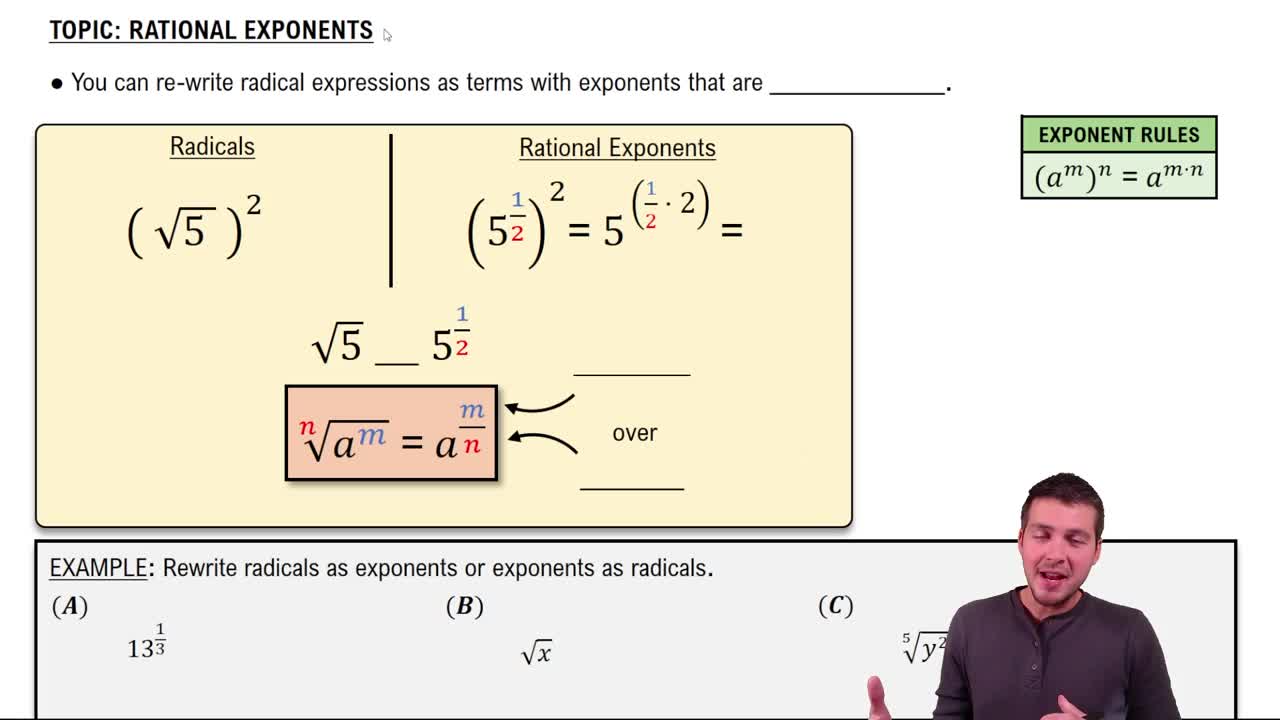Here are the essential concepts you must grasp in order to answer the question correctly.
Rationalizing the Denominator
Rationalizing the denominator involves eliminating any radical expressions from the denominator of a fraction. This is typically achieved by multiplying both the numerator and the denominator by a suitable expression that will result in a rational number in the denominator. For example, if the denominator is a binomial involving a square root, one would multiply by the conjugate of that binomial.
Recommended video:
Rationalizing Denominators
Conjugates
The conjugate of a binomial expression is formed by changing the sign between the two terms. For instance, the conjugate of (a + b) is (a - b). When multiplying a binomial by its conjugate, the result is a difference of squares, which eliminates the radical in the denominator. This technique is essential for rationalizing denominators that contain two terms.
Recommended video:
Properties of Exponents and Radicals
Understanding the properties of exponents and radicals is crucial for manipulating expressions involving square roots. Key properties include the fact that √(a*b) = √a * √b and that (√a)^2 = a. These properties allow for simplification of expressions and are particularly useful when rationalizing denominators, as they help in rewriting and simplifying the resulting expressions.
Recommended video:
 Verified step by step guidance
Verified step by step guidance Verified Solution
Verified Solution



 2:58m
2:58m